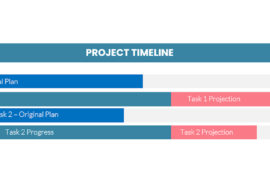 There’s been a lot of project management going on in our office lately and it’s allowed me to do something I usually don’t make enough time for and that’s training project managers. To add to this already interesting task, I had the privilege of addressing McGill University’s project management students this week and found enough commonality between my staff and the McGill students that I thought I’d share it with you.
There’s been a lot of project management going on in our office lately and it’s allowed me to do something I usually don’t make enough time for and that’s training project managers. To add to this already interesting task, I had the privilege of addressing McGill University’s project management students this week and found enough commonality between my staff and the McGill students that I thought I’d share it with you.It seems to be almost universal that when a new project manager starts to manage projects that they are firmly convinced that if only they were in charge, everything would be fine. I watched 2 students this week working on an assignment in class just prior to my lecture where they were asked to organize a company in such a way as to make the project management as effective as possible. Oh if only it were so easy.
These students were worrying the company’s organigram trying to ensure that they would have sufficient authority to effect the changes required. Sure enough, the first question posed to me by the students in class was the first posed to me by my own 2 new project managers inside our firm; “How does the project manager get past the interference (sorry I meant help) of management?”
If you’re a manager and are now getting hot under the collar, you’ve probably heard this before. New project managers seem to always confront this difficulty and those that cannot resolve it don’t remain project managers very long. In an organization, which does more than one project, the most common structure for operations is a Matrix organization where project managers are responsible for specific targets, which we measure in work output and line or resource managers are responsible for the departments whose employees must deliver that work.
The resulting conflict between resource managers and project managers is inevitable and perhaps healthy but for those who think that their perspective is most important, it can be intensely frustrating.
The project manager trainees who I’ve been working with this week wanted to know how they were to acquire the authority to overrule all those resource and line managers in order to accomplish the projects they would be assigned. It was left to me to deliver the bad news. With the possible exception of mega projects where there is only one project going on at one time, project managers are almost never given such authority and it doesn’t take much thinking to see that they shouldn’t be either. Left to their own devices, a project manager would burn staff out. Oh, they’d take care of them for their own project of course, but there would be no allowance for the rest of the employee’s life. If a staff member is absent for 4 and a half days with no excuse, that’s a critical even for the that person’s resource manager. I mean, are they still working here? Are they sick, are they dead? Should I replace them? It’s a big deal. Yet, if I go to a project manager and say “Did you hear about John? He was absent for 4 and a half days last week?”, a project manager is entirely likely to ask me only about the 4 hours during which the person was present “Did they work on my project while they were here?” After all, that’s what is of interest to the project manager.
Project managers also have a horrible reputation for ignoring the requirements of other projects within the organization. When I ask what priority a particular project should have company wide, the answer from the respective project manager is inevitably “at the top”.
How then can a project manager get the resources and attention they need to accomplish the targets they have committed to? Here’s the answer I gave my staff last week. “You’ve got to plead, beg, grovel, demand, enroll, convince, ask, suggest, insist and cajole to get the resources you need. What you can’t do is instruct.”
The natural conflict that then arises between the resource manager and the project manager is one that is common to almost every high-tech company in the world. We’ve taken to using advanced technology to deal with this conflict both within our firm and recommending the same technology outside the firm. What is it you ask? A collaborative web-based tool? An on-line project resource reconciler? No. We make the managers actually talk to each other. I know it sounds trite. But it’s an element of project management which is becoming scarcer and scarcer. We setup a structure whereby the line managers and the project managers must meet on a regular basis to talk about resourcing priorities. Amazingly, they seem to resolve all outstanding resource conflicts without much difficulty on a regular basis. It’s the regularity of it that makes the biggest difference. You can have an argument if you like, but you’re going to be right back here next Friday looking at the same person with the same challenges. It’s makes for a big incentive to get along.
It’s not to say that the latest updates in project software don’t make a difference, they do. But when you use technology to replace human interaction, you do so at your peril. It’s humans after all who will have to get the work done and cooperation between staff can’t be mandated like a feature in an application.
It’s enhancing this human interaction that software is supposed to be best at rather than replacing it. Collaborative project tools are excellent enhancers when a culture of communication is already in place but if these managers aren’t ready to even talk to each other, great software features can’t make a difference.
No matter what the application is, you can’t ignore the human factor and the more of the enterprise that is implicated in a particular corporate system, the more impact the human factor has.




